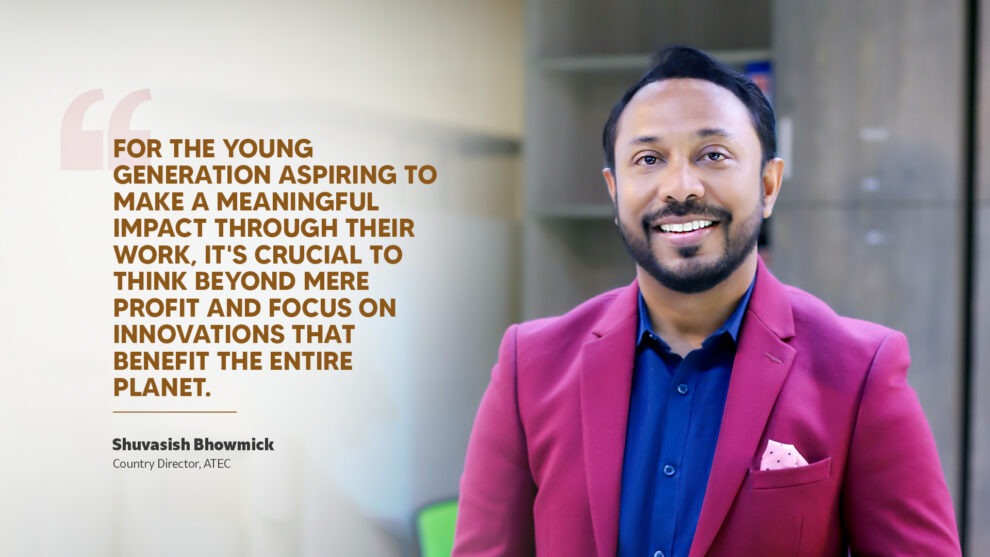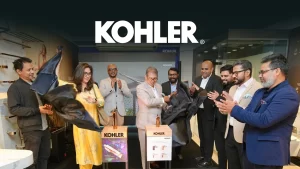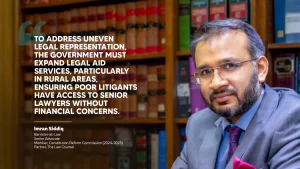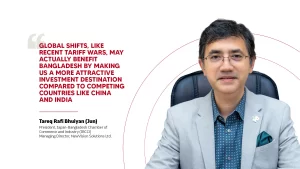- What inspired you to join ATEC, and how has your role evolved since you started?
I have 17 years of experience in the oil and gas sector, with the first 12-13 years dedicated to working in conventional LPG and CNG companies. When the opportunity to work in renewable energy and the biogas sector arose, I was immediately excited by its immense potential for Bangladesh.
Interestingly, I have a background in mechanical engineering, with a major in renewable energy. So, when I received an offer from a foreign company to represent Bangladesh in this field from the ground up, it felt like a dream come true. This was an opportunity to pioneer a sector where no one had ventured with such dedication before, specifically in Biodigesters.
Since then, I have explored the potential of carbon credits, integrating my experience in renewable energy and my engineering expertise. This unique combination presents a fantastic opportunity to represent Bangladesh and myself on a multinational level. It’s a chance to test and evaluate my skills and contribute to a groundbreaking initiative in a field I am passionate about.

- With what vision did ATEC Biodigesters embark on its journey, and how has this vision expanded as ATEC has grown its presence in multiple countries?
The full name of ATEC is Appropriate Technology, and our mission is to tackle one of the world’s biggest problems. For us, the problem statement is crucial: “Leading the way people cook.” Our core mission is to address the clean cooking issue. Globally, nearly 4 billion people, almost half of the world’s population, rely on conventional cooking methods using wood and fossil fuels, which are unclean and harmful to the environment. The extensive use of these fuels results in significant pollution and carbon generation. Our vision is to solve this major problem.
Initially, we started with Biodigesters, which are beneficial for farmers with livestock, but we needed a solution for the rest of the population. We aimed to introduce a technology that is sustainable, efficient, and impactful. By examining cooking practices in terms of their environmental impact, we identified induction cooking as the most efficient and innovative solution. Induction cooking is widely adopted globally, known for its efficiency and lower carbon emissions.
Our challenge was to bring this technology to the masses and address the issue of affordability. While induction cooking is efficient, its initial cost can be prohibitive for many people. To overcome this, we explored the concept of carbon credits as a secondary revenue source. Through carbon credit generation and monetization, we can subsidize the cost of induction cooking for users, making it more affordable. This system allows us to earn revenue from carbon credits while users pay a reduced amount.
The concept of carbon credits involves those who pollute being encouraged to reduce their carbon footprint, with the funds generated being used to support the adoption of green technologies. This is the essence of carbon credits. ATEC’s vision is to lead the global clean cooking sector, making it affordable and sustainable through the strategic use of carbon credits. This is our vision and mission.
- What are some innovative solutions you have developed to address environmental challenges unique to the different regions you operate in?
For testing our solutions, we believe Bangladesh provides an excellent platform due to its large population and significant market potential. Approximately 65-70% of the population still relies on unclean cooking methods. This widespread use of traditional fuels makes Bangladesh an ideal testing ground for our innovations. Additionally, the cooking behavior in Bangladesh, characterized by long cooking hours, aligns with other Asian and some African countries. Therefore, success in Bangladesh could pave the way for success in other regions as well.
The culinary landscape in Bangladesh is diverse, with various cooking methods and fuel sources such as LPG, natural gas, wood, and cow dung. This diversity presents both a challenge and an opportunity for our project. To address these challenges, we developed several innovative solutions.
One of our key innovations is a smart stove that integrates induction technology with IoT capabilities. This smart stove can collect data on cooking hours, energy consumption, and provide real-time electricity bill estimates. Alongside this, we developed the e-cook app, which offers several features:
Usage Tracking – Users can monitor their cooking activity, including monthly and last three months’ electricity bills.
Fuel Comparison – The app calculates savings by comparing the cost of using different fuels like LPG.
Location Tracking – It shows the stove’s location and whether it is active or inactive.
Cooking Analytics – Users can track how much they have cooked in the last 30 days, the associated costs, and the savings from not using LPG, which can be as much as 40-45%. Additionally, the app includes video tutorials to educate users on how to operate the smart stove and cook efficiently.
We also launched a campaign called “Cook to Earn,” encouraging users to track their carbon credits. Users who cook within certain limits earn money at the end of the week, effectively subsidizing their electricity bills. This initiative aims to motivate people to adopt clean cooking technologies by highlighting both health benefits and monetary savings. Our ecosystem leverages carbon credits to offer financial incentives, promoting widespread adoption of clean cooking methods.
Our biggest success has been the creation of this comprehensive ecosystem that supports the generation and monetization of carbon credits. We have extended our efforts beyond Bangladesh to other countries, adapting our innovative solutions to address the unique environmental challenges of each region.

- How does ATEC ensure that its projects not only promote sustainability but also empower local communities economically and socially?
Our initiative serves multiple Sustainable Development Goals (SDGs), primarily SDG 7 (Affordable and Clean Energy) and SDG 13 (Climate Action). By addressing climate change and providing affordable energy solutions, we also contribute to SDG 1 (No Poverty) through income generation. In total, our work impacts SDGs 1, 3, 5, 7, and 13, demonstrating a significant and broad-reaching impact.
For example, women who previously spent 6-7 hours daily collecting wood, organizing it, and cooking can now complete their cooking in 3-4 hours. This shift saves them 2-3 hours daily, amounting to 100 hours monthly and 1200 hours annually. These saved hours can be redirected towards other productive activities, further enhancing their income and quality of life.
Additionally, by switching from conventional cooking methods to our innovative solutions, these women benefit financially. Beyond the economic advantages, there are substantial health benefits. Traditional cooking methods produce smoke that can cause bronchitis and other respiratory issues, contributing to the 3.5 million annual deaths globally due to indoor air pollution. Our clean cooking technology significantly reduces exposure to harmful smoke, helping to prevent such health problems.
- Given that carbon emissions are one of the most pressing environmental issues globally, how are your initiatives effectively addressing this challenge?
Our carbon credit mechanism is quite fascinating. It is built on a foundational calculation of how much carbon the average family emits in each country. For example, if an average family uses 10-12 maund (a traditional unit of weight) of wood every month for cooking, this not only emits carbon but also necessitates the cutting down of trees.
The calculation involves determining the carbon emissions from using wood and other fossil fuels for cooking. When families switch to our clean technology, we can measure the reduction in carbon emissions. However, it is essential to consider the cleanliness of the power grid in each country. Our grid, for instance, is not 100% clean. Therefore, third-party certification is required to validate our carbon savings accurately.
We have obtained the Gold Standard certification, which assesses how much carbon our technology saves from a holistic perspective. Once certified, this data is integrated into a dashboard ecosystem. Customers can see their carbon savings through the app, and we can monitor global usage and savings from the dashboard. We provide third-party access to ensure transparency and credibility. Essentially, we position ourselves as the Tesla of the cooking sector.
The global price of carbon credits varies, and we issue DMRV (Digitally Monitored, Reviewed, and Verified) Carbon Credits. Managing this process digitally allows us to secure premium prices for our carbon credits from buyers worldwide. One of our main buyers is ENGIE, a major French energy company. The revenue we receive from selling these carbon credits is used to subsidize our customers based on their usage. This is the essence of how our carbon credit mechanism operates.
- What strategies do you find most effective in raising public awareness about climate change and environmental conservation across different countries?
Initially, we aimed to keep our approach lean. We first launched during the COVID-19 pandemic, which prompted us to focus on digital outreach. With everyone more digitally connected during that time, we leveraged this to reach our customers and raise awareness. Over the past 3-4 years, our customer acquisition strategy has been primarily digital.
Now, we are planning to expand to the next level by incorporating offline dealer and retail channels. To increase customer awareness, we conducted several campaigns. Our efforts have been recognized and rewarded: we received accolades from GSMA, the Google Impact Award, and numerous other organizations. These awards have significantly boosted our visibility and credibility.
Additionally, the University of California, Berkeley published a report about our initiative, highlighting our achievements. Moving forward, our scale-up methodology will combine both online and offline strategies to maximize our reach and impact.
- In your view, how critical is the adoption of green technologies for global sustainable development, and what role do your initiatives play in promoting these technologies on an international scale?
The response to green technology has been immense, with carbon credits becoming a particularly hot topic. Globally, at major summits, leaders are discussing ways to prevent carbon emissions, and the ecosystem of carbon credits plays a central role in these discussions. The idea is to balance those who pollute the environment with those who implement green technologies and initiatives.
The trend of carbon credits is increasing and receiving global praise, often accompanied by substantial grants. This makes it an impact-driven business. Beyond product sales, companies can secure grants and generate revenue through carbon credits, presenting a promising opportunity for the new generation.
This model stands out because it offers substantial value addition, unlike conventional businesses where such opportunities are typically limited. Thus, the carbon credit market is not only environmentally beneficial but also a highly prospective and innovative business model.
- How have businesses that emit carbon adapted their mindset regarding carbon emissions, and are they taking advantage of carbon credits to expand their businesses?
No. Currently, various guidelines are being developed. Business leaders recognize that global warming needs to be addressed urgently to ensure the survival of both people and businesses. There is a consensus that to continue thriving in the long term, global temperatures must be reduced by 1-2 degrees Celsius, and the primary method to achieve this is by lowering carbon emissions.
Regulations have become very strict. For example, Norway and Germany, known for their automobile industries, are now heavily promoting the use of electric cars. These countries have implemented rules and regulations that favor eco-friendly vehicles, providing incentives like priority parking for EV users. This shift is a testament to the effectiveness of such regulations in encouraging sustainable practices.
In the context of carbon credits, airlines and other businesses are increasingly buying carbon credits to offset their emissions. This practice is not just about compliance but also about contributing to the global effort to reduce carbon footprints. By participating in carbon credit schemes, companies can align with strict environmental standards and potentially benefit from various incentives.
Moreover, this trend is changing societal attitudes toward traditionally undervalued activities, such as cooking. For instance, by offering financial incentives for using clean cooking technologies, we transform cooking from a thankless task into a rewarding activity. This approach can be a game-changer in promoting widespread adoption of eco-friendly practices.
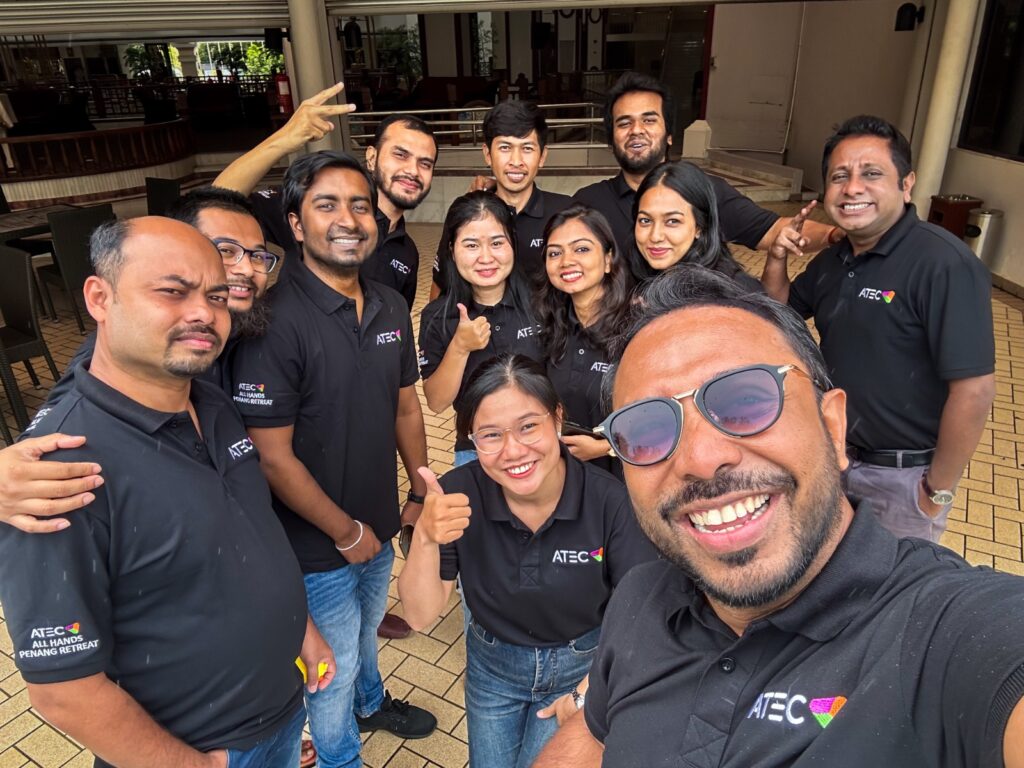
- What advice would you give to young professionals and entrepreneurs who aspire to contribute to environmental sustainability and innovation?
In a world with 8 billion people, there are myriad challenges, especially environmental ones, that require urgent solutions. For the young generation aspiring to make a meaningful impact through their work, it’s crucial to think beyond mere profit and focus on innovations that benefit the entire planet. Technologies that address global issues hold immense promise for young entrepreneurs and professionals.
This sector is particularly promising because it offers numerous avenues for innovation. There are international grants, subsidies, and eager investors ready to support groundbreaking projects. Elon Musk’s journey with electric vehicles (EVs) is a testament to this potential. Initially met with skepticism, Musk’s vision has made him one of the richest individuals within a decade. His success underscores the transformative power of targeting critical global challenges with innovative solutions.
For young entrepreneurs venturing into sectors like agricultural technology, smart climate technologies, and more, the opportunities are limitless. Investors are actively seeking out technologies that can revolutionize industries and contribute positively to global sustainability efforts. The sky truly is the limit for those who can bring impactful and scalable solutions to market.
